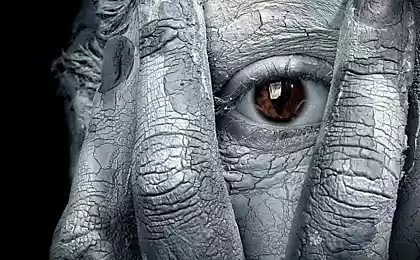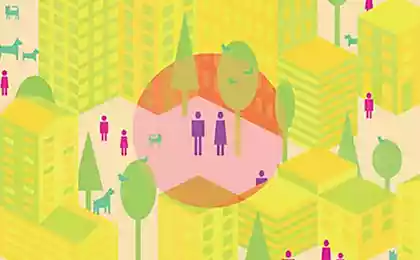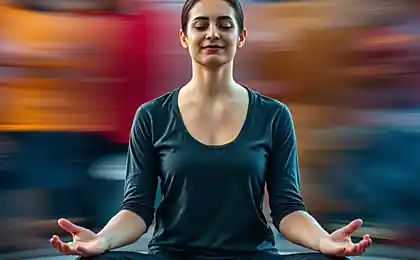476
Emotional scars and Tissue memory
Upledger provides evidence that deprived the brain of laboratory rats can solve maze tasks associated with a food orientation that indicates the existence of "memory" and block decision-making in the spinal cord. He also cites the results of studies pointing to the decisions of the musician only by hand, without the involvement of the Central nervous system.
He says about this:
"It is probable that such forces develop in the periphery in response to the human need to develop certain skills. "

Upledger uses techniques such as somatic-emotional release, by means of which he works with "emotional scars". He adheres to the concept that the palpable changes occurring in the energy fields of the body related to physical, chemical, or emotional trauma.
Is this physiologically possible?
Professor Irwin Korr, a physiologist with international reputation, is also coming to this region of contradictions, but rather at the level of neurology than energy. In the article "Somatic dysfunction, osteopathic manipulative treatment and the nervous system" Korr (1986) States the following:
"Spinal reflexes can be controlled by the use of repetitions, or increase the duration of the stimulus. In accordance with the hypothesis, the spinal cord, like the head, can study and learn new behavioral patterns. In any case, which would not have a record (in memory), increased needs due to the specific afferent stimulation remains an open question."
On the impact of physical changes on the mind, he says the following:
"Clinical experience shows that somatic dysfunction (and manipulation) are a powerful influence on brain function, perception and even personality characteristics of the patient. This experience... raises many fundamental questions and a very impressive clinical introduction. "
So, it seems that the Offset supports the idea of "memory", independent from the brain and tissue changes (regardless of cause), with constant exposure to the factors of "perception and personality".
In conclusion, a review of the opinions, see what he says on this issue Hans Selye, the first researcher of stress (Selye, 1976):
“Long lasting changes in the organism (structural or chemical composition), which underlie the adaptation or exhaustion, are trace effects of stress; they represent a fabric memory, which has an impact on our physical behavior in the future under similar stressful situations. This memory may persist for a long time."
The great Russian scientist Speransky (1944) not only put forward the hypothesis that this state of Affairs, but was also able to prove and demonstrate how to achieve the opposite process. He wrote:
"As a result of chemical or infectious damage to the neural structures occurs degeneration of nerves, which, in turn, gives impetus to the development of other pathological changes in tissues, including inflammatory nature. Their location on the periphery we can predict in advance, and their boundaries often remain unchanged for a very long period."
Rollin Becker says that Speransky had managed to change these imprinted installation "manual flushing CNS CSF using animal or human, with inoperable peripheral tissues normalized" (Becker, 1963).
Sam Becker says the following:
In cases of injury in the Central nervous system manifested a reaction of memory... the area of the body, which was badly damaged, it begins to send thousands of sensory signals in the segments of the spinal cord and brain areas that carry out the supply of this region of the body. If the damage is severe, or prolonged in time, these messages are imprinted in the nervous system as if recorded on tape. "
What happens in the body when taking mixed meal
We eat all the time! How snacks affect your weight
Thus, tissue and nervous system "remember" the trauma and the pattern of dysfunction and keep this information for a long time after the actual injury was cured.
This pattern is a "highly sensitive" for a long time after the actual fact of injury.
Find "the eye of the hurricane", a point of calmness – that is the formula, which Smith, Upledger and Becker recommend that we stick to if we are going to reassure these energy deviations from the norm that exist after the injury, or abuse. published
"Art of palpation", Leon Chaitow
P. S. And remember, just changing your mind — together we change the world! ©
Source: vk.com/massage_ru?w=wall-23903469_10341
He says about this:
"It is probable that such forces develop in the periphery in response to the human need to develop certain skills. "

Upledger uses techniques such as somatic-emotional release, by means of which he works with "emotional scars". He adheres to the concept that the palpable changes occurring in the energy fields of the body related to physical, chemical, or emotional trauma.
Is this physiologically possible?
Professor Irwin Korr, a physiologist with international reputation, is also coming to this region of contradictions, but rather at the level of neurology than energy. In the article "Somatic dysfunction, osteopathic manipulative treatment and the nervous system" Korr (1986) States the following:
"Spinal reflexes can be controlled by the use of repetitions, or increase the duration of the stimulus. In accordance with the hypothesis, the spinal cord, like the head, can study and learn new behavioral patterns. In any case, which would not have a record (in memory), increased needs due to the specific afferent stimulation remains an open question."
On the impact of physical changes on the mind, he says the following:
"Clinical experience shows that somatic dysfunction (and manipulation) are a powerful influence on brain function, perception and even personality characteristics of the patient. This experience... raises many fundamental questions and a very impressive clinical introduction. "
So, it seems that the Offset supports the idea of "memory", independent from the brain and tissue changes (regardless of cause), with constant exposure to the factors of "perception and personality".
In conclusion, a review of the opinions, see what he says on this issue Hans Selye, the first researcher of stress (Selye, 1976):
“Long lasting changes in the organism (structural or chemical composition), which underlie the adaptation or exhaustion, are trace effects of stress; they represent a fabric memory, which has an impact on our physical behavior in the future under similar stressful situations. This memory may persist for a long time."
The great Russian scientist Speransky (1944) not only put forward the hypothesis that this state of Affairs, but was also able to prove and demonstrate how to achieve the opposite process. He wrote:
"As a result of chemical or infectious damage to the neural structures occurs degeneration of nerves, which, in turn, gives impetus to the development of other pathological changes in tissues, including inflammatory nature. Their location on the periphery we can predict in advance, and their boundaries often remain unchanged for a very long period."
Rollin Becker says that Speransky had managed to change these imprinted installation "manual flushing CNS CSF using animal or human, with inoperable peripheral tissues normalized" (Becker, 1963).
Sam Becker says the following:
In cases of injury in the Central nervous system manifested a reaction of memory... the area of the body, which was badly damaged, it begins to send thousands of sensory signals in the segments of the spinal cord and brain areas that carry out the supply of this region of the body. If the damage is severe, or prolonged in time, these messages are imprinted in the nervous system as if recorded on tape. "
What happens in the body when taking mixed meal
We eat all the time! How snacks affect your weight
Thus, tissue and nervous system "remember" the trauma and the pattern of dysfunction and keep this information for a long time after the actual injury was cured.
This pattern is a "highly sensitive" for a long time after the actual fact of injury.
Find "the eye of the hurricane", a point of calmness – that is the formula, which Smith, Upledger and Becker recommend that we stick to if we are going to reassure these energy deviations from the norm that exist after the injury, or abuse. published
"Art of palpation", Leon Chaitow
P. S. And remember, just changing your mind — together we change the world! ©
Source: vk.com/massage_ru?w=wall-23903469_10341
The strongest feeling: how the brain perceives humiliation
Independent gas supply: a device and system capabilities























